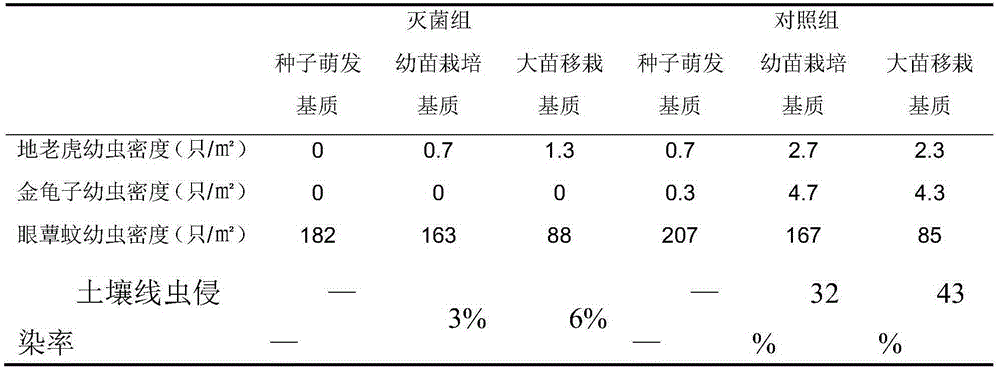Insect pest control method for medicinal plant cultivation base
A technology of medicinal plants and insect pests, applied in botany equipment and methods, plant protection, devices for catching or killing insects, etc., can solve the problems of reducing plant seedlings and seeds, plant seed damage, plant production reduction, etc., to achieve Reduction of reproductive efficiency, cost convenience, and low environmental impact
- Summary
- Abstract
- Description
- Claims
- Application Information
AI Technical Summary
Problems solved by technology
Method used
Image
Examples
Embodiment 1
[0021] A method for preventing and controlling pests in a medicinal plant cultivation base, comprising the following steps:
[0022] (1) Sterilize the crushed and mixed soil substrate by high-temperature steam for 2 hours, reduce the number of eggs in the soil, and effectively control scarab larvae, cutworm eggs, fungus larvae and soil root-knot nematodes;
[0023] (2) For the platform bed and ground bed of the greenhouse, a 40-watt black light lamp is used to trap and kill, and one black light lamp is set per mu, which can effectively prevent and control cutworm adults and reduce their reproductive efficiency, with an average insecticidal rate of more than 90%;
[0024] (3) For field ridges and seedbeds where pests occur, use 2000-fold diluted chlorpyrifos solution to mix with cabbage leaves, place near the field ridges and seedbeds, and replace the trapping materials once a day at around 6 pm, which can effectively trap and kill areas. Tiger larvae, the average insecticidal ...
PUM
 Login to View More
Login to View More Abstract
Description
Claims
Application Information
 Login to View More
Login to View More - R&D
- Intellectual Property
- Life Sciences
- Materials
- Tech Scout
- Unparalleled Data Quality
- Higher Quality Content
- 60% Fewer Hallucinations
Browse by: Latest US Patents, China's latest patents, Technical Efficacy Thesaurus, Application Domain, Technology Topic, Popular Technical Reports.
© 2025 PatSnap. All rights reserved.Legal|Privacy policy|Modern Slavery Act Transparency Statement|Sitemap|About US| Contact US: help@patsnap.com



